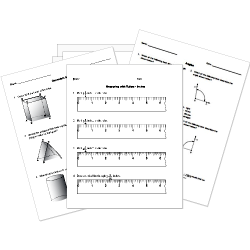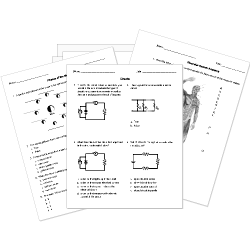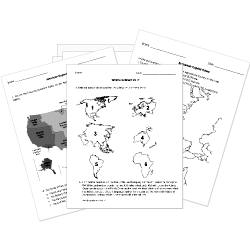Electric Charge and Electric Force
Electric Charge and Electric Force
This lesson aligns with Next Generation Science Standards (NGSS) PS3.C
Introduction
Has this ever happened to you? You walk through a garage, come in to touch a metal doorknob, and get an unpleasant electric shock. The reason for the shock is because of moving electric charges. Moving electric charges are also responsible for lightning streaks and the electric current that flows through cables and wires. Understanding the basic concepts of electric charge and electric force is crucial in comprehending the workings of electricity. In this article, we will learn about the fundamentals of electric charge and electric force, exploring their properties, interactions, and practical applications.
Electric Charge
Electric charge is a basic property of matter. It is a property of subatomic particles like protons and electrons, which are the building blocks of atoms. Electric charge is based on two types: positive and negative. Protons carry a positive charge, while electrons possess a negative charge. Objects can become charged when they gain or lose electrons, altering the balance of positive and negative charges within them.

Coulomb
The electric charge is measured in coulomb (C), the S.I. unit of electric charge. One coulomb is taken as the charge of approximately 6.24x1018 electrons. It is important to note that like charges repel each other, while opposite charges attract.
Electric Force
The electric force is the force exerted between charged objects. It is responsible for various phenomena, such as the attraction or repulsion between charged particles and the flow of electric current. The strength of the electric force is based on the following factors:
- the magnitude of electric charges involved
- the distance between the charges
The higher and closer the charges are, the greater the electric force will be.

Coulomb's Law
Coulomb's Law is a fundamental principle that describes the mathematical relationship between electric charge and electric force. It states that the force between two charged particles, known as electric force (F), is directly proportional to the product of their charges and inversely proportional to the square of the distance between them.
Mathematically, Coulomb's Law can be expressed as:
F=k⋅q1⋅q2r2
Where F represents the electric force, q1 and q2 are the magnitudes of the charges, r is the distance between the charges, and k is the proportionality constant. The value of k depends on the medium in which the charged objects are located.
Electric Fields
Electric fields are regions of space around charged objects where electric forces are exerted on other charged objects. When a charged object is placed in an electric field, a force is exerted due to the interaction between its charge and the electric field. The direction of the force depends on the nature of the charges involved.


The unit used to measure the strength of the electric field is newtons per coulomb (N/C). The direction and strength of the electric field is represented by the electric field lines. These lines are directed away from the positive charges and towards the negative charges. The more field lines are close to each other, the stronger the electric field in that region.
Applications of Electric Charge and Electric Force
Understanding electric charge and electric force is essential in comprehending various real-life applications. Here are a few examples:
Electric Circuits
Electric charge is the driving force behind the flow of electric current in circuits. The principles of electric charge and electric force enable us to understand how circuits work and how components like resistors, capacitors, and batteries interact.
Static Electricity
The accumulation and discharge of static electricity are familiar phenomena. Understanding electric charge and electric force helps explain how objects become charged through friction, induction, or conduction, and how this charge can be transferred or neutralized.
Lightning
Lightning is a powerful natural phenomenon resulting from the discharge of built-up electric charge in the atmosphere. It occurs due to the interaction between the positive and negative charges in clouds and on the ground.
Electrostatic Precipitators
These devices use the principles of electric charge and electric force to remove particulate matter from industrial emissions. Charged plates attract and collect the particles, allowing cleaner air to be released.
Summary
- Electric charge is a physical property of particles that causes them to attract or repel each other without touching.
- The force of attraction or repulsion exerted between charged particles is called electric force.
- An electric field is a space around a charged particle where the particle exerts an electric force on other particles.
- The strength of an electric field is measured in newtons per coulomb (N/C).
Related Worksheets:













